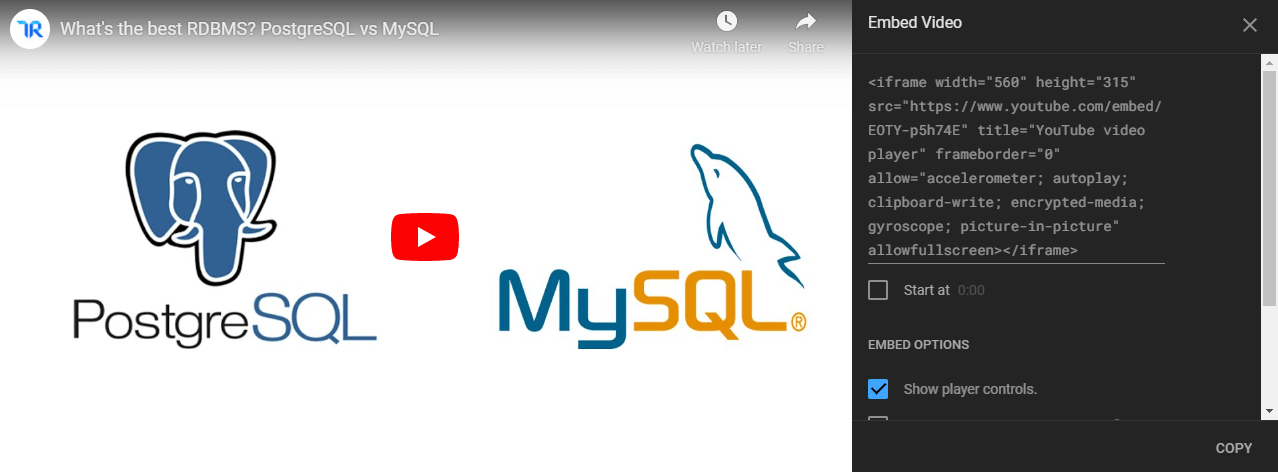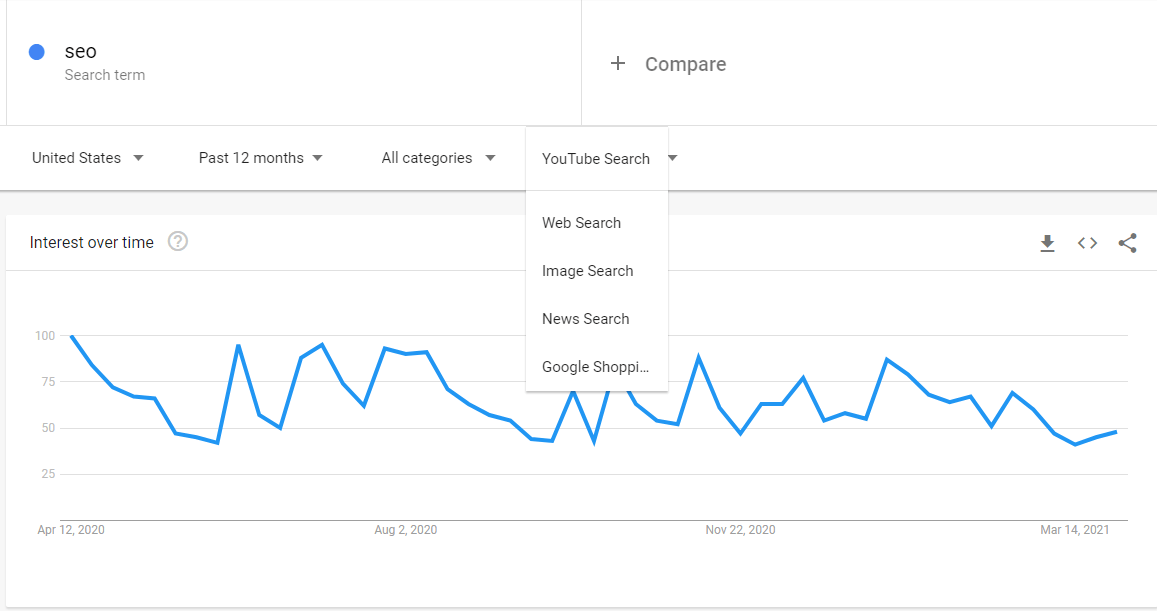SEO for Video Content
The inclusion of video content can drive traffic, sales, and interest for almost any type of organization. Video can be self-produced or outsourced, posted to a third party, or directly on your website. No matter the method, following search engine optimization guidelines for video will help you improve your rankings and achieve better results. Gone are the days of keyword stuffing, SEO for video relies on accessibility, audience targeting, and content optimization. Below is a guide on how to make video content work for you. This piece includes
- General Video SEO tips
- Self-Hosting versus Youtube
- Self-Hosting Pros and Cons
- Youtube Hosting Pros and Cons
- Self-Hosting Specific SEO
- Youtube Specific SEO
How to Optimize Video for SEO
Many methods of SEO for video content can be implemented easily and without a substantial increase in production costs. Abiding by the following best practices will help you use video in an effective, more reliable way for your organization.
The following advice will change in implementation somewhat, depending on if you are producing the video yourself, or including outside content. To start, we will focus on broader tips that apply to all video content, then get more specific to different use-cases.
Target the Right Keywords
SEO is about far more than just keyword stuffing. Doing so can be actively harmful. Despite this, it is still crucial to include the right terminology at vital points in your content. Before production even begins, make sure to take careful consideration as to what keywords you are planning to target. This has specific implications for the production and inclusion of video content.
There are several available tools for keyword research. When content is going on your page directly, Google Keyword Planner is a fantastic option. When using this tool, target keywords with a blend of strong volume and low competition.
More established organizations have greater brand authority online, so their content will tend to rank higher than small groups. As a result, if you are part of a smaller organization, generating content in extremely competitive areas may be challenging.
You may wonder why this is relevant to video content. If you are going to be generating videos yourselves, keyword research is important to do before you actually make the video. Simply, for smaller organizations with less-specialized content, making a video targeting a highly competitive keyword is potentially wasteful.
Instead, look for a variant of the keyword, or some other topic relevant to your organization, where you can rank better. In summary, you don’t run up and try to out-rank Coca-Cola on “best soda” video searches. Find your niche, angle, or specialty, and play to your strengths.
Create Truly Engaging Content
Keeping viewers rapt with attention will ensure they stay on the page longer. This is great for achieving the goal of the video, as well as SEO. While far more comprehensive guides exist, some tips to remember are:
- Exciting thumbnails drive clicks
- Professionalism sells
- No stutters, pauses, or “um”s
- Use sharp cuts and movement
- Stay confident and knowledgeable
- Invest in video and audio quality
This is a truly expansive topic. Below are two videos that can help as quick guides to help you massively improve your work. The first focuses on video engagement, the second on professionalism and etiquette. These can apply to nearly any reason your organization has to produce videos, from sales to demos, to inward-facing content.
YouTube vs Self-Hosting for Video Content
Which platform you upload your video to will impact how you optimize its content and surroundings. Reviews, product demos, site tours, and info dumps can help your organization if done well. Where these are located will depend on your use case and capabilities. Here are the pros and cons of hosting on youtube versus self-hosting.
Self-Hosting Video
This method of video hosting involves keeping the content directly on your organization’s website. The benefits here revolve around being able to drive and take advantage of the resultant traffic.
Self-Hosting Pros
Self-hosting can provide more analytics information than Youtube provides its users. This allows you to gain greater insight into the effectiveness of your video SEO, clicks, and other information. The nature of self-hosting means all the traffic to your video must go through your website. If website traffic is a primary goal, this can be very useful.
This goes beyond the obvious benefit of people clicking directly on the video from search and finding your website that way. One major way video content can be useful to a broader marketing strategy is through page backlinks. If your video is covered by another organization, and the video content is self-hosted, you can take advantage of these links better. All of the clicks from that outside source come directly to your website.
Finally, you have the freedom of controlling what is around the video. Your organization can tailor a webpage specifically to the content, designed exclusively to support it.
Self-Hosting Cons
The big downsides come from the undeniable fact that, (probably), your organization is not Youtube. You will likely not have the domain authority that comes with this. A blog post with video content will be unlikely to rank as well as Youtube-hosted videos in Google’s search results. Youtube videos also allow for easy data markup and transcripts. Video sitemaps are easily generated, you will have no reservations on hosting quality, and Youtube plugins have near-universal support. You also miss out on Youtube’s preexisting audience
This wide adoption of Youtube has other benefits. On Twitter, Facebook, or elsewhere, Youtube commands a level of trust. Not many will hesitate to click on a youtube link. Smaller organizations may not have this.
Another major concern for some organizations will be the data storage considerations of video hosting. This is two-fold. First, video files are huge, especially in higher framerates and resolutions. You will need to ensure you have the storage capacity to handle this. For consistent content producers and smaller organizations, this can be a huge cost. Bandwidth-wise, if your video was to go viral, many would struggle to host the spike in traffic.
The second factor is reliability. Any interruptions to your hosting service will interfere with your content accessibility and usefulness. For organizations with just one data storage point, this can be problematic. A natural or other crisis at your physical location could damage your online presence.
Self-Hosting Bottom Line
Self-hosting is appropriate for those whose primary purpose of video content is driving website traffic. Backlinks and mentions will be an important part of your strategy. Successful organizations will have the resources to support this content, and to make use of its benefits. This includes being able to manage the costs and having the downsides less impactful to their use case.
Youtube Hosting
While other third-party sites exist, Youtube is a massively popular option with plenty of SEO potential. The benefits of this method involve taking advantage of Youtube domain authority, trust, ease of use, and data storage.
Youtube Hosting Pros
The benefits of hosting Youtube counter many of the drawbacks of self-hosting. Most obviously, you will not have to store the video yourself. This removes any file size or internal crisis issues that may arise. There are no bandwidth limits. Ideally, all of your content explodes in popularity, and Youtube ensures this is not a problem. Youtube is also completely free. In the creation process, almost all video software has Youtube-specific export settings. This saves time and effort and is great for those with more limited technical knowledge.
From an SEO standpoint, the domain authority of youtube is fantastic. Youtube is the second most popular search engine in the world, after Google itself. It is also the third most visited website. Users can find content directly on the website. The service also allows for unique SEO optimization opportunities, which we will cover later
Importantly, Youtube’s widespread adoption means that you can still have the video displayed directly on your webpage. Nearly any content management system will allow for directly embedded Youtube videos. Youtube also includes directly in its sharing options prewritten HTML code for each video. Simply copy and paste into an HTML accepting field, and you should have the content directly on your desired page.
It is worth noting that for this benefit you have to use Youtube’s branded player.

Youtube is also incredibly easy to use. Little to no user experience is required to get a video online. In fact, following these SEO tips will help you be extremely competitive in your field. As you may have noticed, at TrustRadius, we use Youtube video hosting. We find the ability to embed videos directly to pages allows us to take advantage of many of the benefits of self-hosting, without some of the complexities.
Finally, Youtube allows you to build a channel, with playlists and recommended videos. For sales content, informative videos, and demonstrations, Youtube is a fantastic choice.
Youtube Hosting Cons
The major drawbacks of hosting on a third-party website come from the lack of control and traffic from your website. This section is basically a mirror of the pros of self-hosting. A click to view the video on Youtube is one that could have been driven to your website. This is said with the massive caveat: could have been. Youtube hosting will be unsuitable to those who want greater analytics features and have a strong focus on traffic.
Youtube users will also have to abide by the Youtube terms of service. These are not particularly stringent. Mature content is likely to be flagged. You will also have to contend with the Youtube ranking system. It is notoriously difficult to pull a video back from a poor start, so the first few days of content life are vital.
Youtube Hosting Bottom Line
For many organizations, especially those without strong domain authority, Youtube hosting will be a great choice. The popularity of the service and the ease of use combine for a strong user experience. The tips below will help you turn this common, global tool into a powerful force for your organization.
How to Optimize Self-Hosted Videos
While similar in production, there are some specific ways to optimize self-hosted videos. Make sure to remember the broader video SEO guidelines, as well as these. Consider also checking out this great vendor video on content SEO.
Build Your Page Around the Video Content
While effective, Google’s ability to pull information directly from video content is limited. For this reason, it is important to make sure the webpage supports the visual content you are hosting. Make sure to include a keyword-rich video description and title. Your thumbnail should be interesting, and the page not overly distracting.
Use a Metadata Tool to help Google Classify information
On the page, use a tool like Structured Data Markup Helper to help Google classify elements of the page. This will allow you to mark the author, post date, and other information vital to SEO. These elements are crucial to other content outside of your video pages.
Add a Transcript and Captioning
These two things are vital to helping both SEO and user experience. Videos that have closed captions rank higher than those that do not. This is particularly important if your content will be shared on social media. On Facebook, for example, the vast majority of users watch videos without sound. For product demo and service descriptions, this is vital to increase retention and reduce bounce rates.
Transcripts expose your spoken word content from your video to the SEO environment. Take advantage of this by ensuring your videos have strong, keyword-laden scripts. Take advantage of the same tools like Hemmingway to allow for Google and reader-friendly readability. Check out our category page on transcription to learn about services that exist to save you from doing this process manually.
Limit File Size
One limitation of self-hosting is the loading times associated with the loading of your content. For this reason, keep videos as short as possible, and steer away from hosting multiple on one page.
How to Optimize Videos for Youtube
Once again, use all the tips for broader video SEO. Youtube is a specific hosting service, and such has some nuance in how it ranks its content. The tips below will help you make the most out of this service.
Uses Youtube for Keyword Research
If your content is going on Youtube then there is no better way to optimize for the website than using it during the research process. Simply start by entering your keyword or phrase, and let the autofill suggest popular versions of your search. This is an easy way of finding popular and trending versions of your original idea. Another option is to use Google Trends. While you can use this to help your content rank on Google, there is more this has to offer. There is a “Youtube Search” feature directly in the tool. Tick this option, and gain insight into keyword rankings directly from the hosting service.

Optimize Descriptions, Video Titles, and Channel Pages
While this may seem obvious, this is an area many exclude from their SEO strategy. Make use of the same tools we have discussed already. Include the keywords the video specifically focuses on. Make sure the descriptions are clear and informative. This is also an opportunity to call out and link to your web pages, social media, and more.
On your channel, cultivate a clear identity. Use your brand logo and color scheme for thumbnails and banners. Consistency is key, and the visual appeal will go a long way in helping improve bounce rate and clicks.
Don’t Rely on Youtube CC and Transcription
Include your own End cardstranscripts and closed captioning. Youtube does make mistakes here, and this is an SEO opportunity. Make sure to include time-stamping.
Audience Retention is Vital
An important metric to Youtube’s Ranking system is watch time. Follow the guides mentioned earlier on how to create more engaging content. While this is a key element of all video content, this is especially true for Youtube.
Shorter is NOT better on Youtube. What matters is keeping those who click on your content viewing the player for as long as possible. Beating the competition in retention for your keywords will greatly improve your rankings.
Include Call to Action’s and Use Playlists
As you grow your channel, encourage users to subscribe and link your videos. This is somewhat of a balancing act. It can come across as annoying if done multiple times, but a clear ask is vital to improving your views. Subscribers will be easier, repeat views, that are notified of your new content. Likes and comments improve your rankings. The latter is also a great way to engage with your audience, so consider replying, especially to direct questions.
Playlists allow you to control the autoplay features built into Youtube. Organize similar videos into playlists, to encourage those who find one of your videos to keep watching. This means your videos can more naturally support one another, and help you grow your channel
Include Keywords in the File Name
This is a rather straightforward tip. When uploading content, add some keywords to your file name. For example:
ProductDemo.mp3
Could become:
BestLawnmowersInSeattle.mp3
Include Endcards and Links
Related to the CTA’s, this tip helps you further promote your website, product, and channel directly in your videos. At the end of your video, add an extra 10 seconds with an outro screen. This can be static or include you giving an overview of the links provided. Youtube allows you to have linked content appear directly on the video player. Use this for subscription CTA’s, and to link related content.
Video Creation and More SEO Information
For those looking to create video content and take advantage of the SEO potential it provides, there are tools available. Check out our category page on video editing software. If you are on a tight budget, read our article on free video editing software. Finally, for a video SEO piece, it would be a shame to not include our own channel. Explore our own video content below.
Was this helpful?
